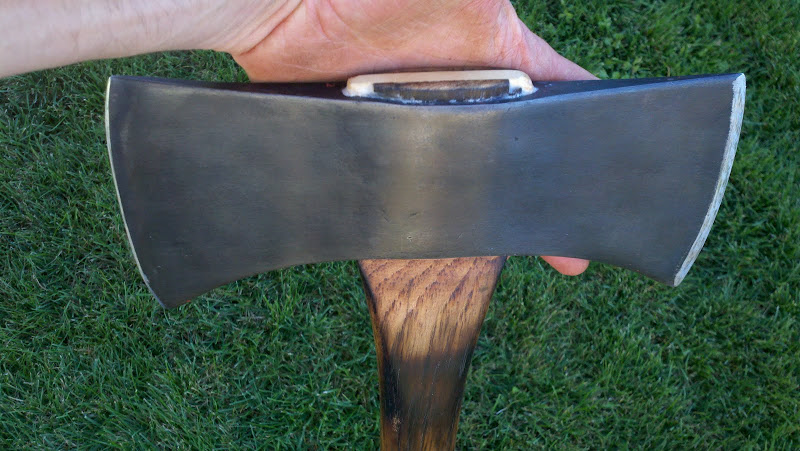- Joined
- Mar 8, 2006
- Messages
- 448
Hi all:
I found an old (about 35 yrs) rusted axe in my father's garage and thought I would clean it up a bit to see what was underneath. It turns out that it is an old Sears Craftsman Axe, which after a bit of work on the belt sander, and a new hickory handle, is actually real nice.
There are some slight gouges in it and rough spots. Also, I only have the standard 36" bench top belt sanders. As such, I can't get the finish even. For example, I would like to have a satin finish on the whole head, but can't seem to get there with the belt sander. I do have a palm sander, but not sure if this will work?
Is there some hand polishing I can do? If so, what can I use? Keep in mind, a satin finish is good, NOT a mirror polish.
Thanks!
I found an old (about 35 yrs) rusted axe in my father's garage and thought I would clean it up a bit to see what was underneath. It turns out that it is an old Sears Craftsman Axe, which after a bit of work on the belt sander, and a new hickory handle, is actually real nice.
There are some slight gouges in it and rough spots. Also, I only have the standard 36" bench top belt sanders. As such, I can't get the finish even. For example, I would like to have a satin finish on the whole head, but can't seem to get there with the belt sander. I do have a palm sander, but not sure if this will work?
Is there some hand polishing I can do? If so, what can I use? Keep in mind, a satin finish is good, NOT a mirror polish.
Thanks!

